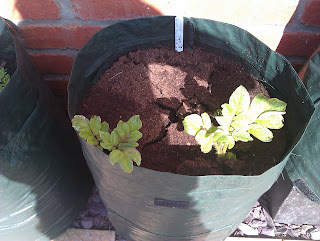I don’t know about you, but I have experienced endless frustration over the years with my chilli plants. Year after year, my excitement levels soar as I watch the number of flowers on my chilli plants increase exponentially. I watch them lovingly and daydream about what I will do with the glut of chillies that is obviously about to come my way. I imagine luscious stews with increased depth of flavour, the smell of freshly baked chocolate chilli bread loaves permeating the house, the hot/cold contrast of chilli ice cream and I salivate at the very thought. However, my dreams are short lived and rudely interrupted by the unwelcome sight of flower after flower dropping off, no swelling of flower stalks (a tell tale sign that the flower will go on to greater things) and the harsh reality that like every other year, this year will be full of broken promises by my chilli plant, which doubtlessly yields not even one measly chilli.
You will all appreciate that there is only so much disappointment one person can bear. I was ready to wave my white flag of surrender to the chilli growing world and pack it in once and for all, but then a handy tip came my way from my very wise and talented Mother-in-Law. Having experienced the euphoric sensation of success, I am now ready to impart this pearl of wisdom on any and all who will hear it. Read on, you beautiful veggie growers, and get ready for a veritable chilli feast.
This problem with a feast of flowers followed by a famine of chillies appears to be a pollination issue. As a result, the plants that will be mostly affected by it are the ones that are not grown in the great outdoors. Living in Northern Ireland, I am forced to grow my chilli plants in a protected environment. Like most of us, they go into shock when confronted by the harsh Northern Irish climate. The only difference is, they seem less likely to recover. If the truth be told, I do not know whether chillies rely on wind or insect pollination or perhaps both. What I do know, is that when they are grown indoors, they are generally protected from both wind and insects, which effectively stops the pollination process. I had researched this online and there is many an article citing that the sure fire way of achieving an increased yield is through gently shaking the flower stems, thus releasing the pollen and allowing pollination to occur. I have absolutely no doubt that this method works for many a chilli grower out there; it simply has never worked for me. I tried it for years to no avail.
I was having this exact conversation with my (as previously stated) very wise and talented Mother-In-Law. She had been minding my chilli plant for me whilst we were on holiday and commented on how many flowers it had. With a despondent tone in my voice, I advised her that I was confident that all these flowers would simply drop off or wither and die, as they had done in previous years. I declared with great conviction that the likelihood of any manner of chilli yield, no matter its insignificance, was a big, fat zero. Patiently, and with the air of a therapist about her, she questioned my disillusionment. I went through my turbulent history with chilli plants and explained that, despite my continued efforts, I seemed doomed to failure on a yearly basis. She allowed me to both vent my frustrations and wallow in self-pity, before asking one simple question: “Louise, have you ever tried to brush them?”. I had no idea what she was talking about and was quietly convinced that old age must finally have taken hold of her.
As it turns out, this was probably the most astute moment of her veggie growing life. She explained to me that by taking a paintbrush (or a basting brush, in my case) and brushing the stamen of the open flowers, the pollen becomes settled on the bristles. If you then take the brush and brush another open flower, you transfer the pollen onto that flower, effectively pollinating it. You can keep on doing this across all the open flowers on the plant, ensuring that each and every one of them has been pollinated. This tip is sheer brilliance! You have to trust me on this one. I went home and dutifully brushed each and every open flower on the plant. Low and behold, within no time, the chillies came and they continue to come to this day. Every time I see new flowers appearing on my chilli plant, out comes the basting brush and I start brushing. Of course, there are a few casualties along the way and some still wither and die, but it is of far more importance that some yield chillies, which I and the rest of my family get to enjoy.
Needless to say, the white flag of surrender was promptly thrown in the bin. These days my daydreams are not rudely interrupted by some harsh reality and I still salivate at the thought of all the delicious concoctions I can whip up with my chillies. The only difference is that when I salivate now, I can also taste the sweet taste of success.
Give it a go. I promise you, you’ll thank me later. :)














